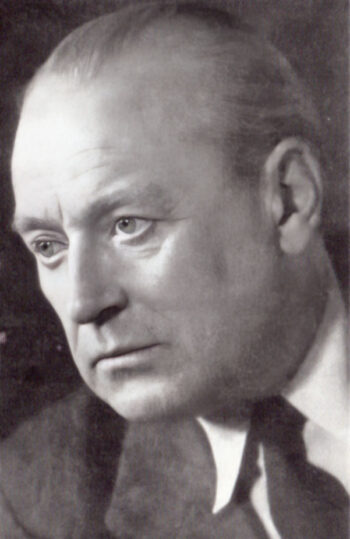Pfannenstiel, Wilhelm

Wilhelm Pfannenstiel (12 Feb. 1890 – 1 Nov. 1982), SS Standartenführer, was professor for hygiene at the University of Marburg. After the war, Kurt Gerstein claimed in his various statements that Pfannenstiel had accompanied him on a trip to visit the alleged extermination camps at Belzec and Treblinka. Although the destination of that trip was allegedly a secret, Pfannenstiel came along anyhow, “more by accident,” as Gerstein wrote. Although what Gerstein was about to witness in Belzec and Treblinka was allegedly an extreme secret that no outsider was to witness, the outsider Pfannenstiel was allowed to tag along to witness it all anyway, or so Gerstein claimed. (See the entry about him for details)
As preposterous as Gerstein’s various statements are, the French took them seriously. Since they had driven Gerstein to suicide and couldn’t prosecute him anymore, they initiated proceedings against Pfannenstiel instead as being co-responsible for the alleged extermination policy. He was arrested and interrogated in preparation for the I.G. Farben Trial, and kept in Allied custody until 1950. The interrogation protocol shows that initially he insisted to have learned only later about gassings, but then both Pfannenstiel and his interrogator started regurgitating Gerstein’s nonsense, as if it were a routine matter that everyone was familiar with – evidently because the interrogating prosecutor knew Gerstein’s text, and he must have informed Pfannenstiel.
Pfannenstiel managed to wriggle his way out of Allied attempts to nail him for Gerstein’s tall tales, but then, after the West-German judiciary took over in 1949, things got more serious. In 1950, he was interrogated as a suspect again, but due to his co-operation and claim that he was only an accidental observer – true to Gerstein’s claims – he managed to switch his role to that of a witness for the prosecution the next time the issue came up in 1959. During the West-German Bełżec show trial of 1965, he was transformed into an important witness, the official guarantor of the “truth” of Gerstein’s collection of delusions, much to the benefit of the Holocaust orthodoxy, who had no leg to stand on regarding Belzec. In gratitude for Pfannenstiel’s services, three proceedings against him were shelved, and the first official German publication of Gerstein’s report left out any reference to him.
In private, however, Pfannenstiel expressed what he really thought. In 1963, French Holocaust skeptic Paul Rassinier wrote him a letter, in which he explained his suspicion that Gerstein’s report was neither true nor authentic, and that it had been drafted by the two U.S. officers who had first interrogated him in southwest Germany. Pfannenstiel minced no words in his response letter of 3 August 1963:
“Your assumptions regarding the genesis of his [Gerstein’s] report, this most incredible piece of trash in which ‘poetry’ far outweighs truth, and also about his death [suicide], are in my opinion quite correct.”
Pfannenstiel also explained that Gerstein’s use of his name in this “trash” had caused him serious trouble.
In later testimonies, when trying to put Gerstein’s “trash” in his own words, as was expected by the West-German judiciary, Pfannenstiel added his own set of contradictions and absurdities to the story, thus demonstrating that a dense web of lies simply cannot be straightened out. For instance, where Gerstein had spoken of 6,700 deportees, of whom 1,450 arrived dead at Belzec, Pfannenstiel spoke of 500, then later of 300 to 500 deportees, only “some” of whom arrived dead – or later, none at all.
Gerstein’s mission, he insisted at one point, was not to switch the execution method from exhaust gas to hydrogen cyanide, as Gerstein had stated, but merely to disinfest a large quantity of clothes. Furthermore, he declared that Gerstein had been to Lublin and Belzec several times before, all quite in contrast to Gerstein’s tale.
Pfannenstiel stated on one occasion that he had come along on Gerstein’s trip for curiosity’s sake; in a later testimony, he said that Globocnik had suggested his presence as a professor of hygiene, only to change that later again as his own suggestion to Globocnik; or maybe he was invited by Christian Wirth to observe a gassing, as he stated later. Or he went along so he could send a report to Berlin, as surely Hitler must have been unaware of what was going on, thus assuming the role which Gerstein had assigned to himself in his report: the knight in shining armor trying to rescue the Jews.
The gassing engine was either a 1,100-HP diesel motor set up outdoors on a platform, or a 10-HP motor setup inside the building. Neither fits the orthodox tale.
The gassing victims were either buried in mass graves, or first partly burned with some flammable liquid and then buried – while the orthodoxy has all the corpses burned to ashes.
In the face of Gerstein’s untrustworthiness as a witness, Pfannenstiel’s task was to give Gerstein’s claims a credibility makeover by eliminating its outrageous exaggerations, which Pfannenstiel tried hard to achieve. Today, some members of the orthodoxy consider Pfannenstiel’s testimony more important than Gerstein’s, although in reality, Pfannenstiel’s version only added more contradictions to this collection of nonsense.
(For more details, see the entry on Kurt Gerstein and Mattogno 2004a, pp. 52-62.)

You need to be a registered user, logged into your account, and your comment must comply with our Acceptable Use Policy, for your comment to get published. (Click here to log in or register.)